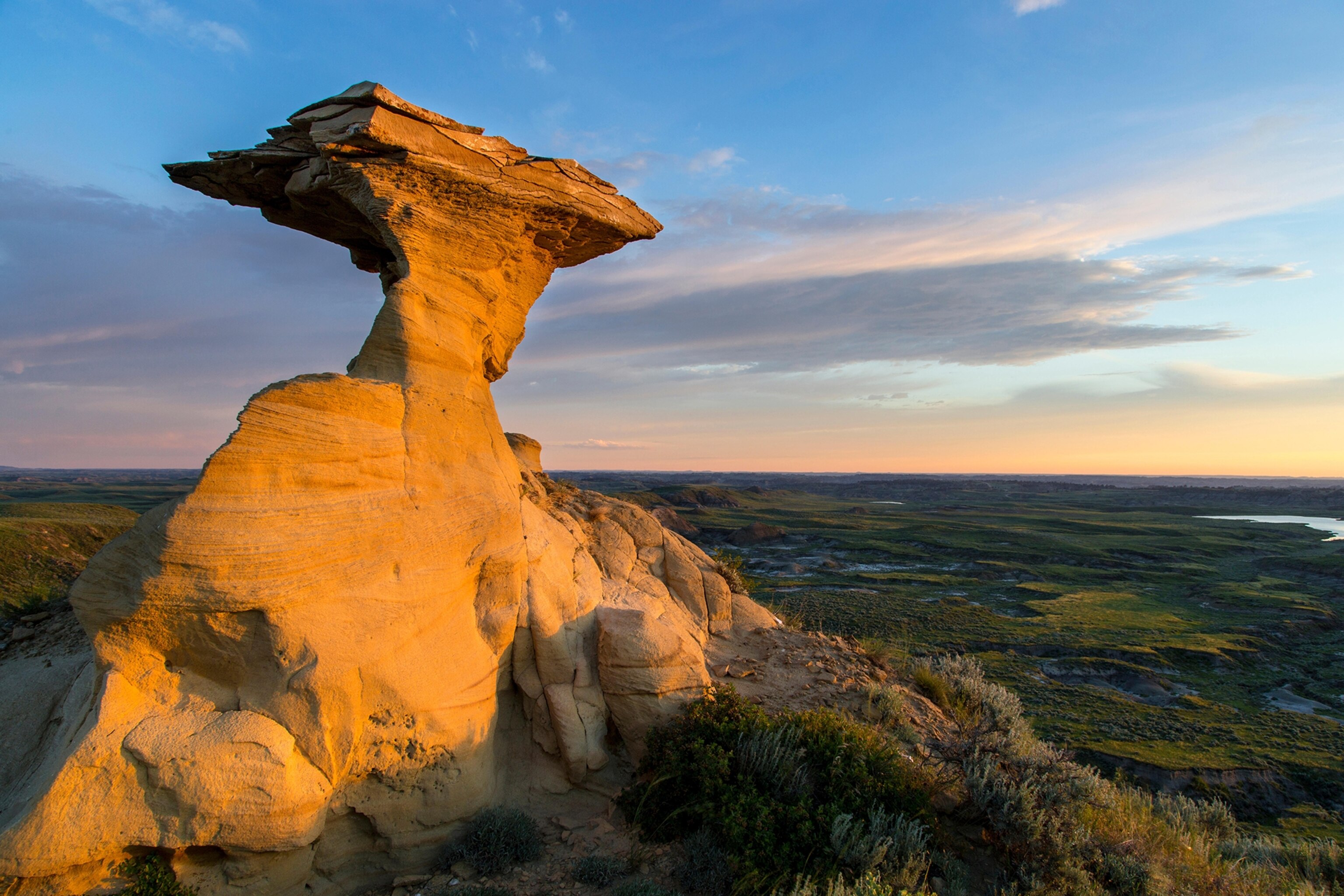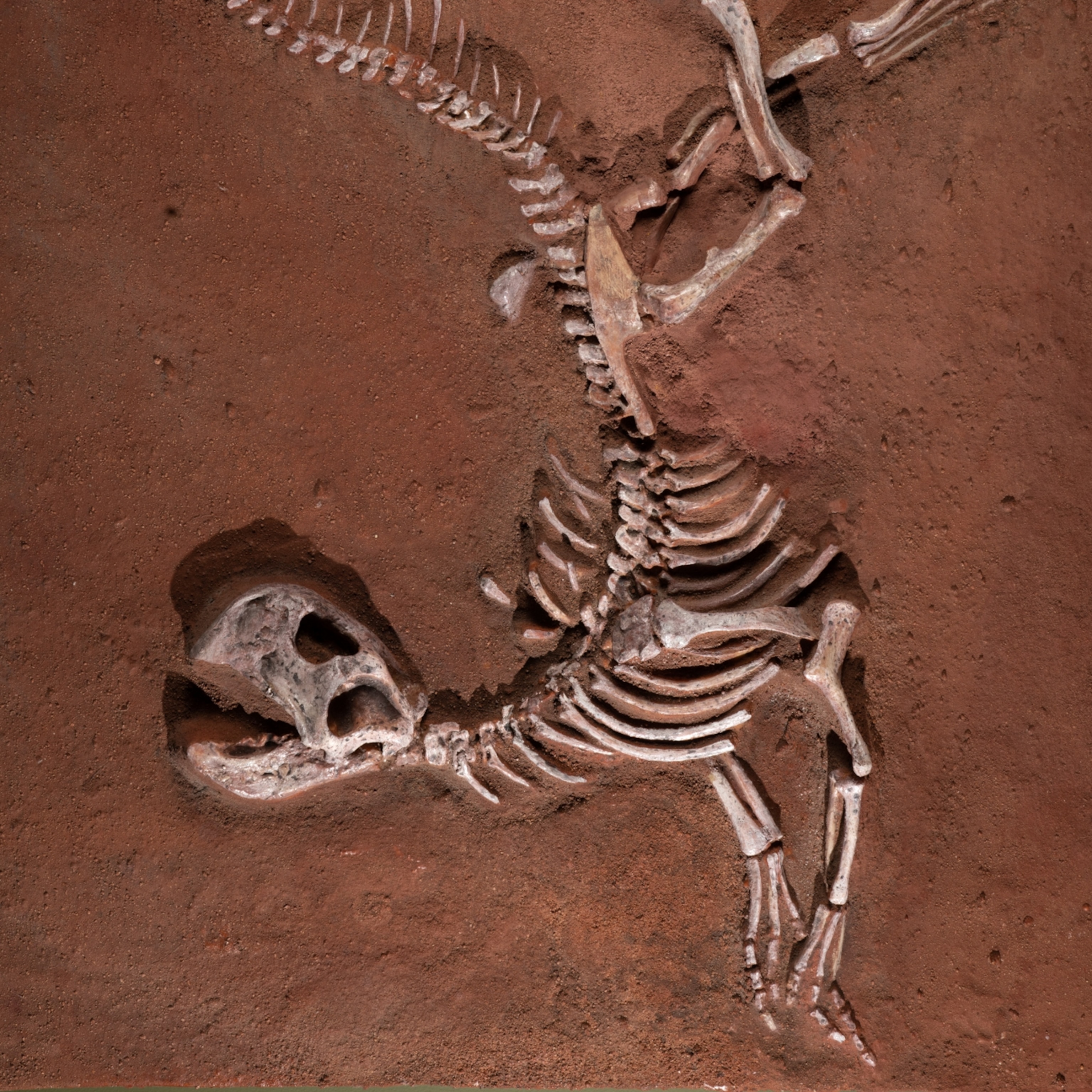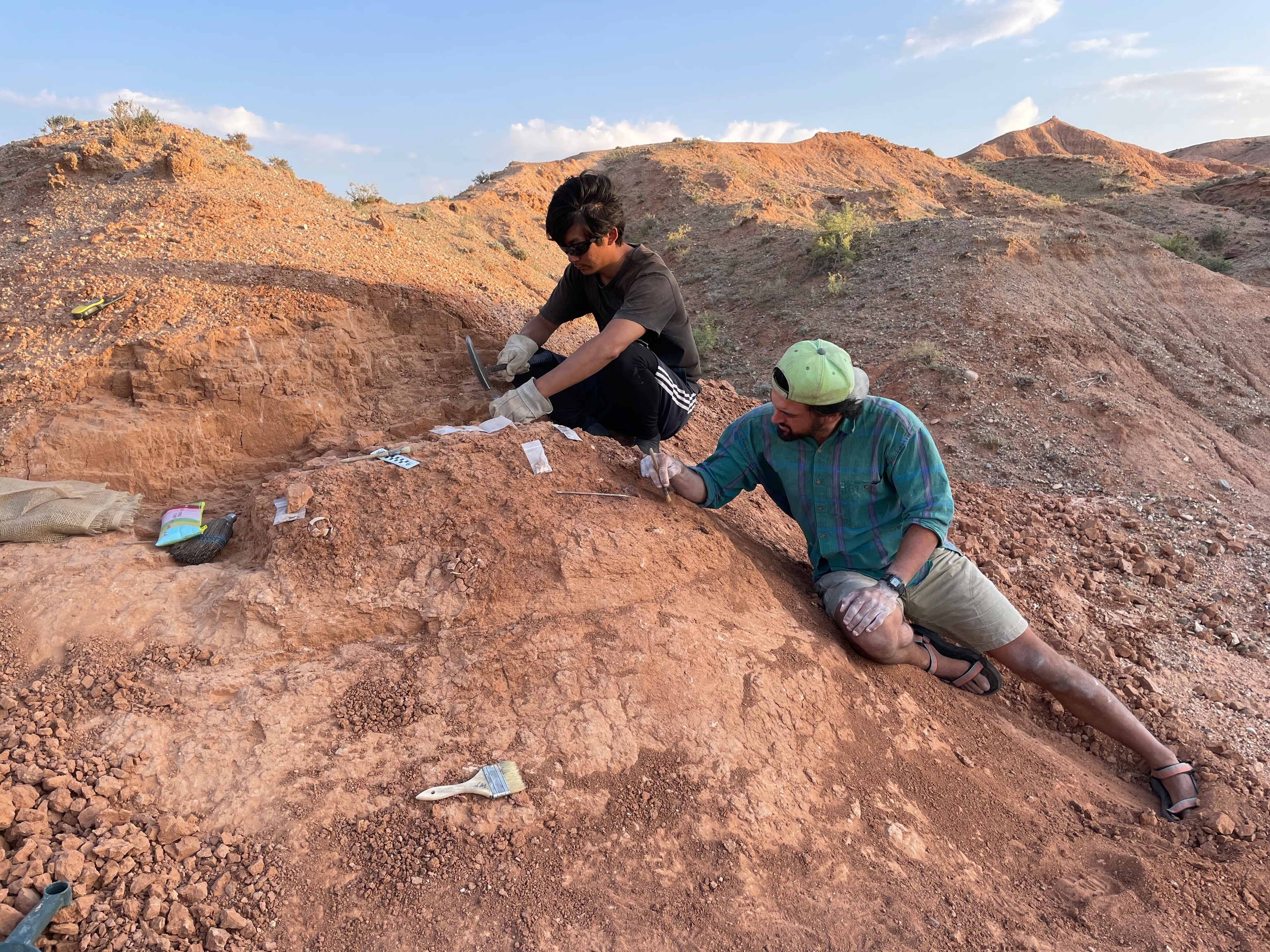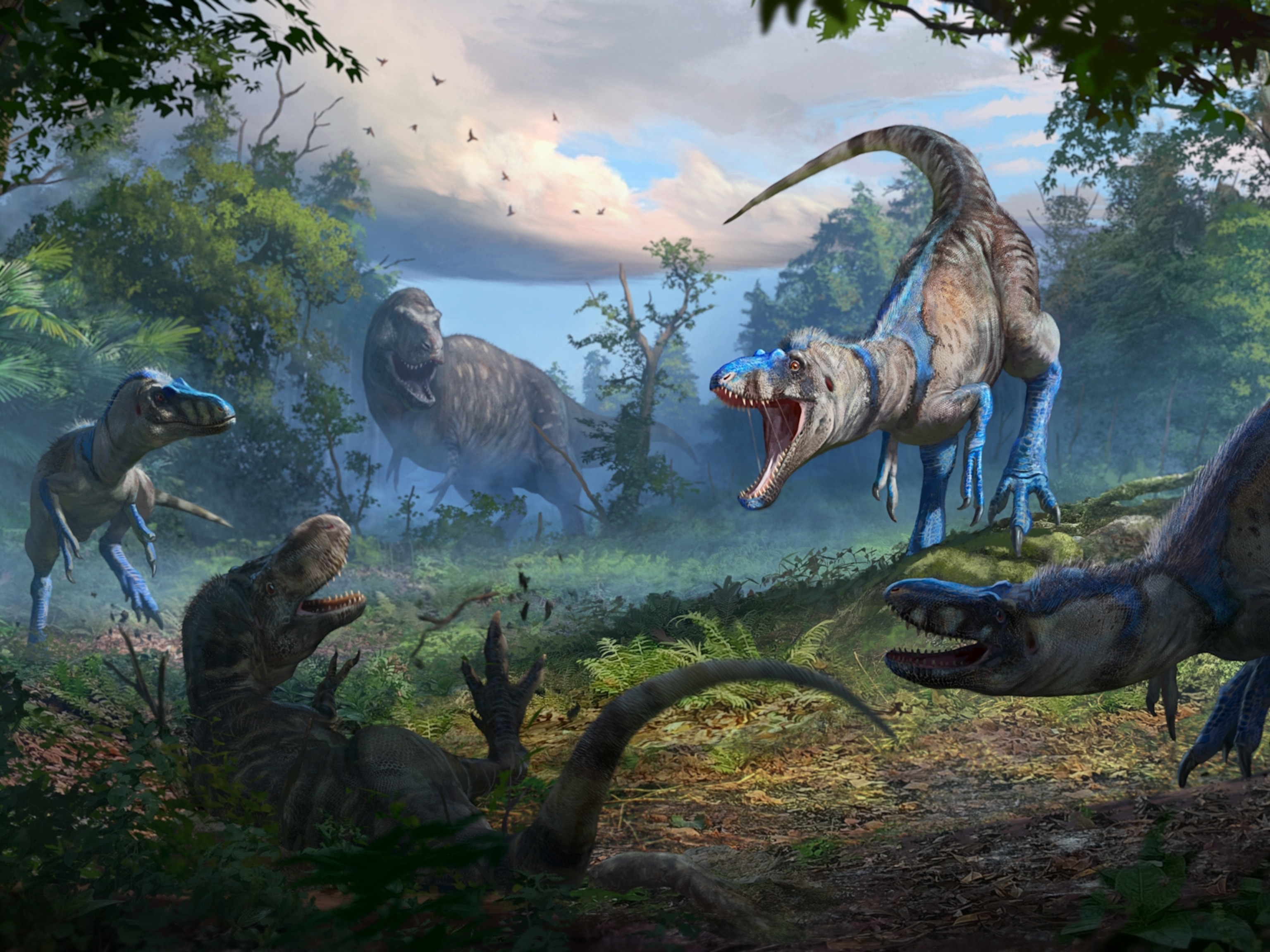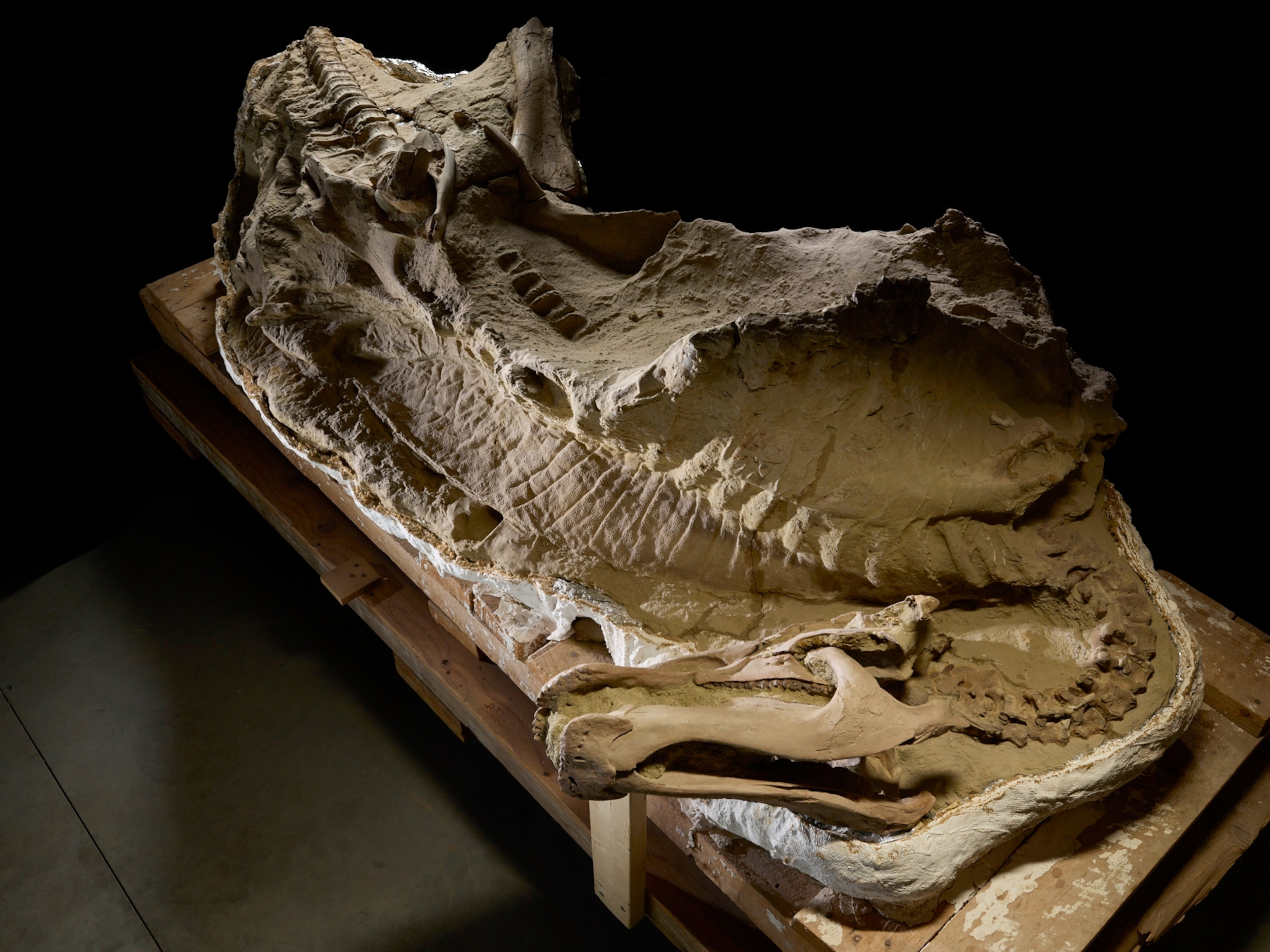Mere minutes after a miles-wide asteroid slammed into Earth 66 million years ago, a hailstorm of tiny glass beads rained down on a flooding estuary in what's now North Dakota. As seismic waves from the impact thrashed the water, plants and animals were jumbled up and buried in the shifting sediments, which preserved the aftermath for millennia.
Now, researchers say this site—newly described in a paper in the Proceedings of the National Academy of Sciences—represents an exceedingly rare snapshot of the moment that marked the dinosaurs' demise. Handfuls of fossils have been found before at other places that also capture this moment in the geologic record, known as the K-Pg boundary. But the North Dakota site potentially represents an entire ecosystem affected by the catastrophe.

“Essentially, what we've got there is the geologic equivalent of high-speed film of the very first moments after the impact,” says lead study author Robert DePalma, a Ph.D. student at the University of Kansas and a curator at the Palm Beach Museum of Natural History.
“To see organisms that would have been impacted by the actual event at the end of the Cretaceous is just stunning,” adds coauthor Philip Manning, a paleontologist at the University of Manchester. (See why some scientists think that volcanoes helped doom the dinosaurs.)
On Friday, The New Yorker published a feature describing the site—sometimes in more detail than the study itself provides. According to DePalma, the new PNAS paper will be just the first of several scientific studies that will fill in the details of this remarkable find.
So, what does the published data actually reveal so far? And what else might the site hold for paleontologists? We've got you covered.
Rain of glass
The North Dakota site, nicknamed Tanis after the “lost” ancient Egyptian city, lies on private ranch land within a tiny outcrop of the larger Hell Creek Formation, a series of rock layers that record the hundreds of millennia leading up to the dinosaurs' extinction.

DePalma first learned of the site from a fossil-dealer acquaintance, who had prospected there and found little he could sell for high value. Based on the fish, the dealer thought the site was a pond deposit that formed many thousands of years before the K-Pg boundary. But the more that DePalma mapped the site, the more he reconsidered. What if the site was in fact the low-lying portion of a river valley?
As described in the paper, DePalma found telltale signs of the K-Pg impact in the site's sediments, including bits of quartz shocked under the impact's immense pressure, as well as plenty of impact debris.
After the asteroid struck, it tore a gaping hole in Earth's crust some 50 miles wide and 18 miles deep, sending hunks of molten earth splashing upward and outward with ferocious speed. High in the atmosphere, the debris coalesced into tiny glass blobs, many of them less than a millimeter wide. These particles, called tektites, started raining down about 15 minutes after impact in a torrent of glass that didn't let up for another three quarters of an hour.

In many K-Pg sites, the tektites formed a discrete layer—but not at Tanis. The site's many layers of sediments are chock-full of tektites, which researchers interpret as a sign of water sloshing back and forth as the tektites fell. Tree resin at the site managed to catch some tektites before becoming fossilized as amber. DePalma's team even claims to have a tektite buried within the two-inch-deep hole it punched into sediment once it landed. After being flung onto land, a mass of fish became entombed all at once, and their exquisitely preserved bodies include gills congested with impact debris.
“It essentially stockpiled the rarest and most poorly represented things in [the rock formation] in one deposit that we can study for decades—and that’s without even including the impact scenario,” DePalma says. (Here's why some experts think the asteroid hit just the right spot to cause the mass extinction.)
“I certainly was approaching it from a place of skepticism, but to be honest, having read through the paper, I’d be personally hard-pressed to come up with an alternate explanation,” says Victoria Arbour, paleontology curator at the Royal BC Museum who was not involved with the study.
Ken Lacovara, a paleontologist at Rowan University who was also not on the study team, points out that more than 350 sites around the world preserve the K-Pg boundary, and some of these sites also bear fossils. In 1987, paleontologists described shark teeth and clam shells at a K-Pg site in central Poland. In 2013, researchers in Denmark found isolated shark teeth within the clays laid down by the impact's fallout. But Manning and other researchers who have seen the fossils up close stress that Tanis stands alone.
“It's just mind-boggling,” says Florida State University paleobiologist Greg Erickson, who is not on the team but saw the fish fossils firsthand when visiting DePalma's lab several weeks ago. “I've never seen anything like that, and there's stacks of these things!”
Seismic sloshing
Though DePalma and his colleagues interpret the site as an estuary in a river valley, there are signs of creatures at Tanis that normally lived out at sea. The study documents some fragmentary marine fossils, including the teeth of ancient sharks, aquatic reptiles called mosasaurs, and an extinct type of mollusk called an ammonite. DePalma and his teams interpret the mix of land and ocean animals as a sign that water from an inland sea suddenly washed upriver, spilling its guts onto the riverbanks at Tanis. (See other evidence for a mass shark extinction in the wake of the asteroid strike.)

“The presence of the ammonite there is very weird ... it's like putting a squid in the Upper Potomac,” says Kirk Johnson, director of the Smithsonian National Museum of Natural History and an expert on the Hell Creek Formation. Johnson adds that if the mosasaur tooth is confirmed to be the same age as the rest of the site, it could represent the youngest mosasaur material ever found.
The site's sediments also suggest that a sudden rush of water overtook it. Researchers initially thought the deluge was the impact's tsunami racing up the Western Interior Seaway, a dinosaur-era body of water that stretched from the Gulf of Mexico to northwest North America. But the timing was off: It would have taken eight to 16 hours for the tsunami to reach Tanis, but the site's sloshing must have occurred within the first hour after impact.
Instead, the team thinks that the floods were seiche waves, pulses of flooding caused by magnitude 10 to 11 earthquakes triggered by the impact. Much like the footfalls of T. rex shook every glass of water in the film Jurassic Park, the asteroid impact would have generated such waves that would have sloshed bodies of water around the world.
Extraordinary claims
So far, many geologists and paleontologists have welcomed the study's insights into the asteroid impact.
“The beauty of the study—and it is a beautiful piece of work—is that it is what you expect: Giant rock hits Earth, stuff happens,” says Paul Renne, a geochronologist at the University of California, Berkeley, who has studied the detailed timing at the end of the Cretaceous.
However, nearly every paleontologist contacted by National Geographic who is not on the study team raised some concerns about the rollout of the discovery, going back to when DePalma presented previews at conferences in 2013 and 2016. Some researchers were so shocked by his claims at the time, they wondered whether the site was too good to be true.
Some of DePalma's early work has also raised eyebrows, including one high-profile error. In 2015, DePalma unveiled a new species of dinosaur called Dakotaraptor, but a 2016 study led by Arbour revealed that DePalma had accidentally included fossil turtle bones in Dakotaraptor's reconstructed skeleton. Still, DePalma's colleagues vigorously defend his work on Tanis.
“There’s not one person out there that hasn’t dropped the ball at some point,” Manning says. “He has produced a remarkable study.”
Concerns also linger about the lack of visibility. The New Yorker story published days before the underlying scientific study and its 69-page supplement were set to formally appear online. National Geographic obtained both documents and distributed them to outside researchers for comment.
According to the New Yorker, Tanis abounds with fossils, including teeth, bones, and hatchling remains of almost every dinosaur group known from the Hell Creek Formation. The story also reports the presence of foot-long feathers possibly from dinosaurs, pterosaur remains, and an unhatched egg of some kind with a preserved embryo inside.
None of these details are in the study, however. No dinosaur bones are mentioned in the main study, and the supplement highlights only one hip-bone fragment from a horned dinosaur like Triceratops, found with “associated impressions of tissue.” (The New Yorker claims that a suitcase-size piece of fossilized skin is attached to the bone fragment.)
“The weird thing is, DePalma has been very hyperbolic and cryptic for the last six years,” says the Smithsonian's Johnson, who was also interviewed for the New Yorker story. “The paper is fine, and we can talk about its significance, [but we] have it paired with the New Yorker article, which has a lot more nuanced detail and a lot more claims. It just makes us all a little bit queasy.”
Steve Brusatte, a paleontologist at the University of Edinburgh and a National Geographic grantee, also expresses some consternation: “Right now, I am left with more questions than answers ... It seems odd.”

To verify the study's claims, paleontologists say that DePalma must broaden access to the site and its material.
“It’s the case where extraordinary claims require extraordinary evidence; the jury should be out until other people look at this,” says Kevin Padian, a paleontologist at the University of California, Berkeley.
“If I were in [DePalma's] situation, I would need to put on my science armor and get ready for a lot of criticism—and I think that that’s OK,” adds Arbour. “The nature of science should be for people to come at this with lots of different perspectives and lots of different approaches.”
DePalma says that the new study is supposed to be a geological introduction to Tanis, not a full description, and that the team is working on follow-up publications. Also, the excavated fossils are entering museum collections, making them available for wider study. The horned-dinosaur bone, for instance, now resides at Florida Atlantic University.
The researchers add that there are early discussions with the ranch owner on how best to protect Tanis for posterity. In the meantime, the site continues to reveal its secrets.
“Virtually every day they dig there, they see something they haven't seen before,” says study coauthor Mark Richards, a geophysicist formerly at the University of California, Berkeley, now at the University of Washington, who visited the site in 2017. “You can go for days or months at a paleontology dig site and not find anything interesting, and [DePalma] finds things literally by the hour. It's unbelievable.”
